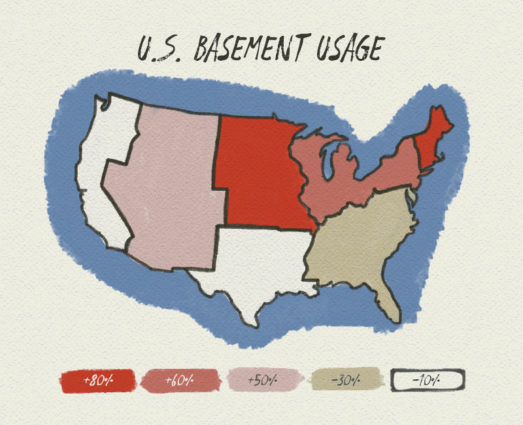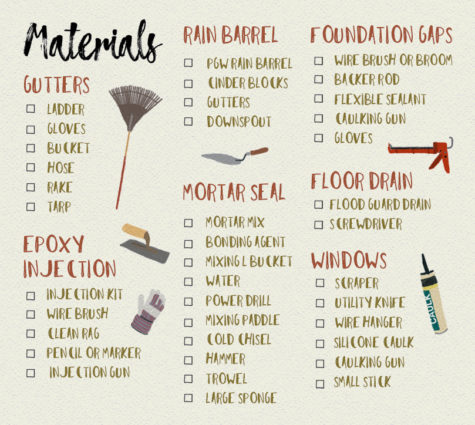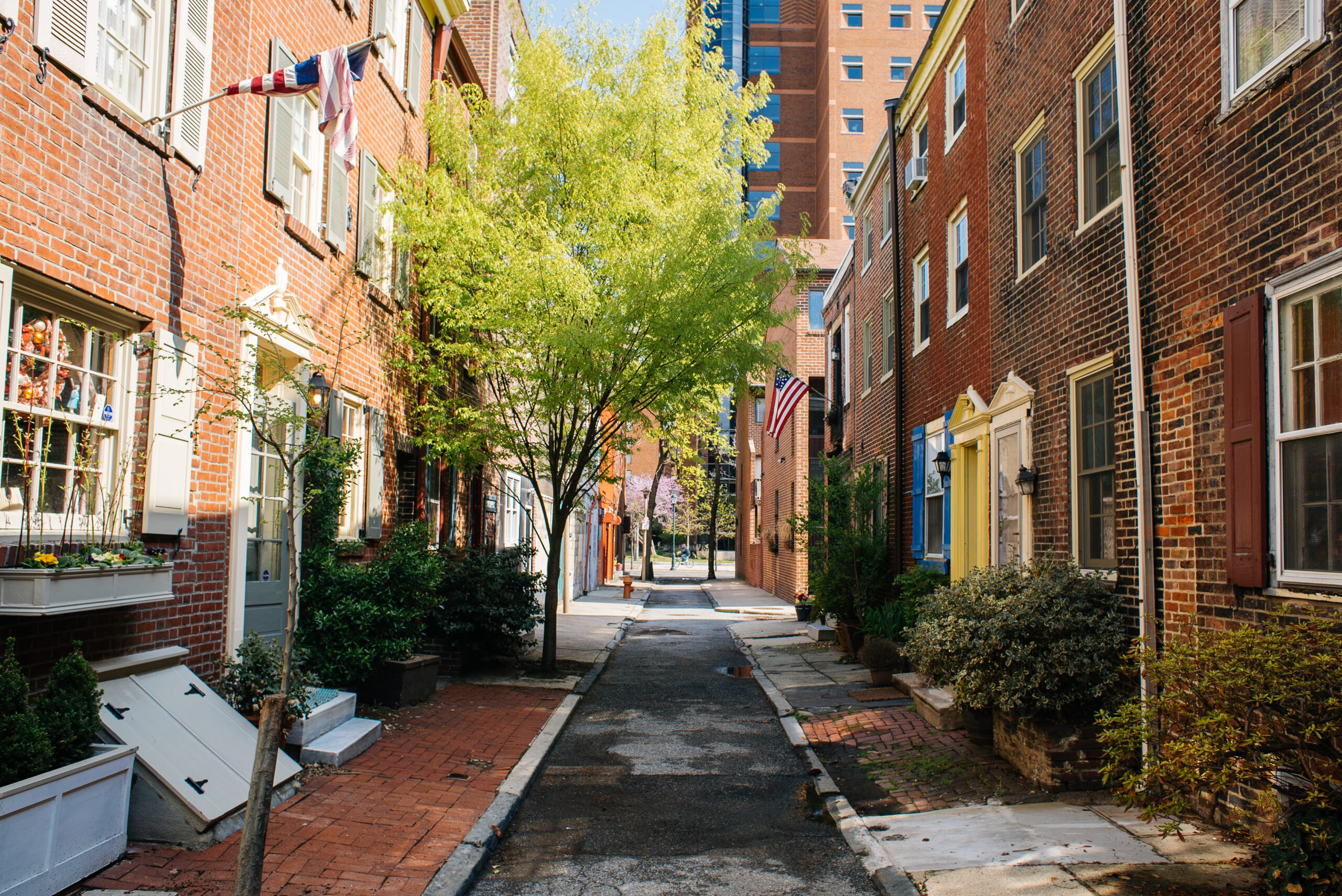home ownership
DIY Basement Flooding Prevention Projects

If you’re a homeowner in Philadelphia, at one point or another you’ve probably experienced walking down your basement steps to discover a flood zone.
Unfortunately, Philly has a century-old sewage system that’s easily overwhelmed by heavy rainfall. When that happens, rowhouse basements are frequently left to bear the brunt of those inevitable water backups.
According to the Philadelphia Water Department, backups are largely a result of the amount of pavement that covers today’s streets; there’s much more now than when the sewers were built at the turn of the 20th century. It means less ability for rainwater to absorb naturally into the soil, forcing it all into a sewer system that’s ill-equipped to process such high volumes.
What’s more, beyond city sewer issues there are a plethora of other causes of basement flooding, all of which you are responsible for as a homeowner. But fear not, because we’re here to help you identify some of the most common culprits, and show you how to fix them on your own using proven DIY techniques.
Read on to discover what they are, and how you can fix them quickly and inexpensively!
Why Have a Basement at All?
Basements are in decline overall in the United States, with fewer than 30 percent of new homes being constructed on a full basement or crawlspace foundation, except in colder climate regions. According to the National Association of Home Builders, about 63 percent of homes built in the Mid-Atlantic during or after 2013 include a basement—more than double the national average.

Colder cities like Philly require basements because home foundation footings need to be set at least 12 inches beneath the frost line, which is around three feet deep in Southeastern PA. If footings aren’t a safe distance below the frost line, they can become displaced as ground temperatures cycle through periods of freezing and thawing. Shifting footings are very dangerous for your entire home’s structural integrity, so they must be built low!
The basement of your older Philadelphia home is likely between six and seven feet from the bottom to the joists above, but shorter and longer distances aren’t too uncommon. Many newer homes include basements deeper than seven feet so they can be used as functional spaces.
DIY Flood Prevention Projects
These are our most common causes and, for the most part, easy-to-fix solutions for basement flooding. Many of these issues are inexpensive to address, and can be achieved without having to hire a professional contractor.
And be sure to check out our materials checklist for each of these projects, and a YouTube playlist of tutorials below.
Gutter Maintenance

Gutter neglect is among the most preventable and easily-fixed causes of home water buildup. Rid your gutters of leaves and other debris frequently enough that they’re never clogged, and make sure your downspouts divert rainwater away from your house and its foundation.
Landscaping
Even small Philadelphia rowhome yards and back patios can contribute to water buildup that will jeopardize your basement. It’s possible that time has caused your yard to sink and slope, or that flowerbeds or other cosmetic landscaping is creating the same issue. If your yard is mostly concrete, it can slant toward your foundation over time, too.
Consider running your downspout into a rain barrel, which PWD’s Rain Check program will provide and install for free for Philadelphia residents who attend one of their educational workshops.

You can also regrade or install a system such as a French drain, but these solutions will require a professional hand.
Cracking Repairs

Cracking foundation walls are common in Philadelphia’s older homes, and one of the most prevalent causes of water intrusion. Don’t keep your basement out of site and out of mind, and regularly inspect walls for cracking. If you discover hairline sized cracks, you can fairly easily fix them on your own with an epoxy injection kit.
Larger cracks can be filled with mortar mix. For this method, you’ll need to chisel out the crack on each side of the wall so it’s beveled inward the whole way through. Then, you can seal the base of the crack with foam, then cover it up with your mortar mix.
Foundation Gaps

Similarly to foundation cracks, your house—especially if it’s older—may have gaps. Most commonly, these will exist in the form of separation between your brick facade and the sidewalk in front of your home, or between the back foundation wall and your concrete patio. Check to see if there are noticeable gaps where sidewalks/patios should be kissing foundation walls. You can close these gaps simply and inexpensively by placing backer rod in the gaps, and caulking over it with flex sealant.
Leaky Windows

If your basement window is leaking, there are few things that could be happening, but most likely it’s because the caulking that seals its edges to the adjacent wall is compromised. This is cheap, quick and easy fix that only requires a canister of silicone caulk, caulking gun, and something like a plastic spoon to smooth the surface after you’ve applied it around the perimeter of your basement windows.
This video will show you how to easily complete the job.
Sewer-related Remedies
Sewer backups stem from infrastructure for which the city is ultimately responsible, but there things you can do as a homeowner.
Install a backwater prevention valve in your basement’s drain pipe. It’s similar to the back-flow prevention system you already have that stops your drinking water from mixing with raw sewage, and will help prevent sewage from backing up into your basement when city sewers are overwhelmed. There are a variety of models and price points available that range from inexpensive pieces you can screw right in, to heavier-duty units that require professional installation.
A green roof can minimize your basement’s chances of sewer-related backups, and prevent river pollution. It only takes an eighth of an inch of rainfall in Philly for the system to surge and send untreated sewage directly to our rivers—the worst type of pollution they can receive. Green roofs act as buffers between rainstorms and the sewers, holding some of the water back, and helping to prevent it all from surging the system at once. On top of the environmental benefit, less water in the sewer system also means a reduced chance of backups flooding your basement.
You can also consider a sewer line warranty.
The good news is, with a little bit of patience, time and elbow grease, you should be able to successfully tackle any of the above issues on your own. You’ll also save a fortune in professional service markups and labor costs.
Here’s our YouTube playlist of videos with easy-to-follow tutorials for all of these projects:
Here’s a checklist of all the materials you need to get any of these tasks completed:

Feel free to get in touch if you have more questions. Good luck!







